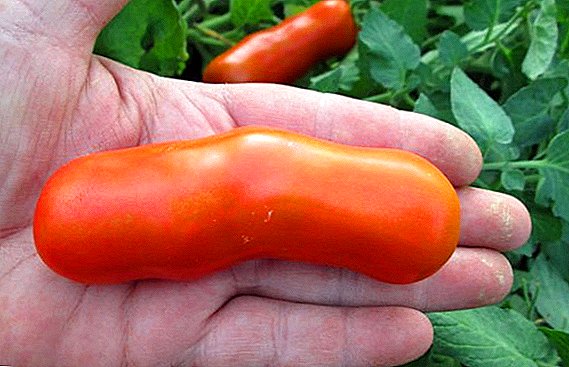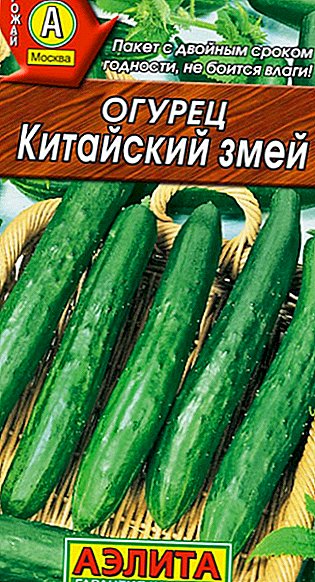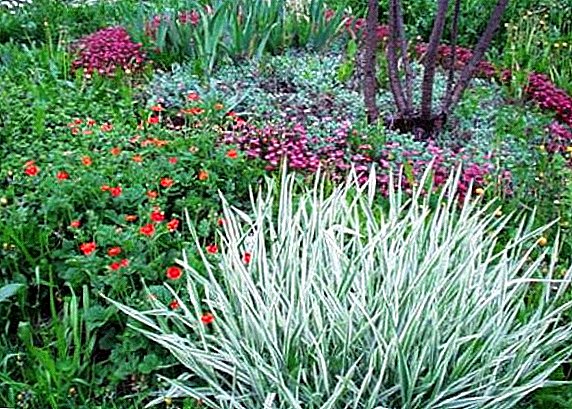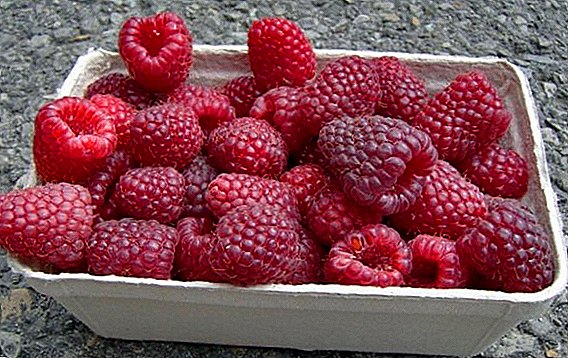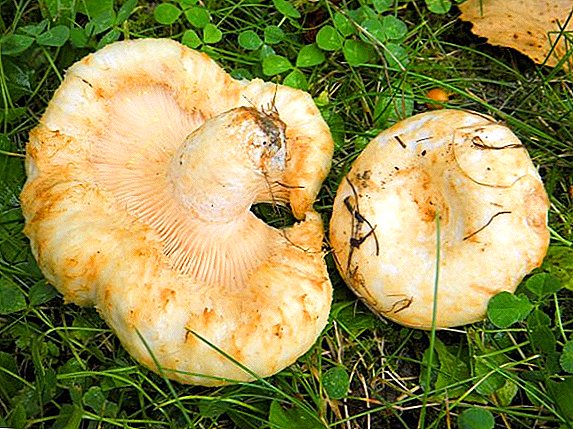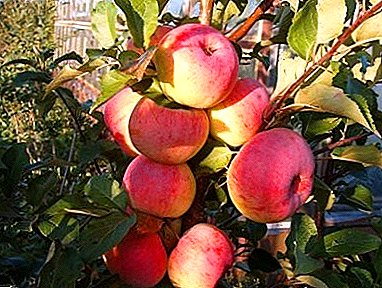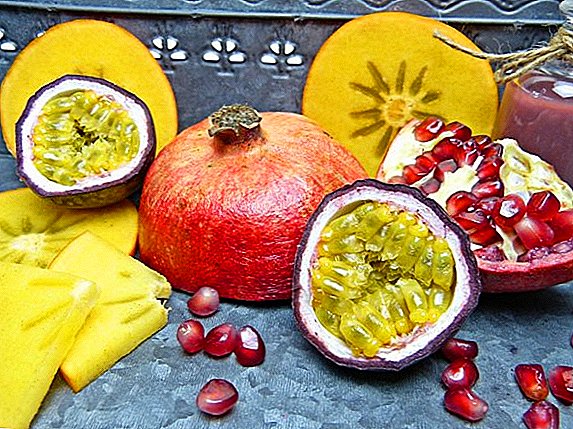 Geranium or pelargonium pleases the owner with regular lush flowering, so it can often be found on the window sills of many gardeners. For regular flowering plants need to organize him the right care, and one of its main conditions is feeding the geranium nutrients.
Geranium or pelargonium pleases the owner with regular lush flowering, so it can often be found on the window sills of many gardeners. For regular flowering plants need to organize him the right care, and one of its main conditions is feeding the geranium nutrients.
In this article we will look at the types of fertilizers needed for the flower, the rules for their application and general tips for caring for the plant.
What is top dressing
For normal development and abundant flowering plants constantly need nutrients, but even the fertile soil is depleted within 2-3 months after planting.
Indoor flowers do not manage to get nutrients from natural sources, as they grow in pots, therefore, when growing geranium indoors, you need to periodically add fertilizer - a complex of fertilizers consisting of the minerals, vitamins and nutrients the plant needs.
This procedure prevents the depletion of soil in a pot with a plant and a positive effect on the development of the flower.
Did you know? The name of the flower comes from the Greek word "geranos" and in translation means "crane".
Top dressing can be:
- constant - made according to the schedule to maintain the balance of nutrients in the soil during the various phases of the flower life cycle;
- urgent - it is brought in the event that the flower shows signs of shortage of one or several necessary substances.
 Only in the soil enriched with essential substances, geranium will maintain a healthy appearance and regularly enjoy bright and large flowers.
Only in the soil enriched with essential substances, geranium will maintain a healthy appearance and regularly enjoy bright and large flowers.Features care for geraniums
Like any indoor plant, geranium needs care. The flower does not require specific conditions for growing, but the minimum requirements for caring for it are recommended to be observed.
The list of basic plant care rules is presented below:
- a pot of geraniums should be placed in the open, a plant needs a lot of sunlight;
- Recommended air temperature in the room is from +12 to + 20 ° С (but not less than + 10 ° С);
- Pelargonium must be watered abundantly, but not too often, but it cannot be sprayed;
- pots with drainage holes in the bottom are used to grow the flower;
- geraniums need access to fresh air, but you cannot keep it in a draft;
- For lush flowering, the plant is grown in fertile soil and regularly fed;
- it is necessary to periodically cut yellowed leaves and dried inflorescences in order to preserve the decorative appearance of the plant and give it strength to form new buds.
We recommend to learn how to use geranium for medicinal purposes.
General rules for feeding
It is not difficult to make flower dressing, but incorrect frequency or errors in its technology can harm the plant, therefore, when fertilizing for geranium, it is recommended to follow these general rules:
- if the geranium is in the heat for a long time, then before feeding it must be moved to the shade for at least an hour;
- 1 hour before fertilization, the plant must be watered to avoid root burns;
- it is possible to feed a flower only from May to September, since in autumn and winter it is at rest;
- fertilizer cannot be applied during plant disease; first, it is necessary to determine the cause of the disease and cure it;
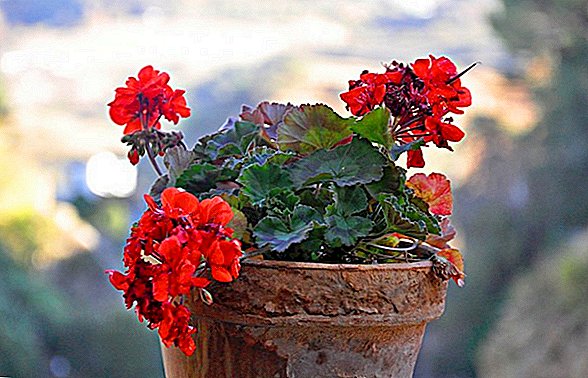
- after applying top dressing, it is recommended to loosen the soil surface for better breathability;
- for feeding young pelargonium need to use half the dose of fertilizer;
- the frequency of application of top dressing depends on the type of top dressing and ranges from 7 to 20 days.
Important! For the preparation of an aqueous solution of fertilizers, it is recommended to use warm water (at least + 20 ° C) so that the substance dissolves better in it.
How and what to feed the geranium for abundant flowering at home
In order for pelargonium to bloom abundantly, and fertilizers are beneficial, they need to be applied according to certain rules. First of all, it is important to determine how to water the flower, and to know the frequency of application of top dressing.
For regular flowering, the plant needs minerals, vitamins and a small amount of organic matter.
Video: Geranium dressing for lush flowering
Consider the technology of feeding:
- Potassium and phosphorus are key elements for successful bud formation. They need to be added to the water intended for watering the flower, and make every 14 days.
- To achieve flowering of pelargonium in winter, it is watered heteroauxin or glucose solution every 7 days.
- Using organic fertilizer they are dissolved in water and applied no more than once every 3 weeks.
- For beautiful flowering plants need to make vitamins B1, B6, B12. They are bought in ampoules and dissolved in water (2 liters of water for 1 ampoule). Pelargonium is poured over the solution every 3 weeks, alternating vitamins with each other.
Consider in more detail what kind of fertilizer is suitable for geranium, and the rules for its introduction.
Read as well as when it is better to plant geraniums at home.
Organic fertilizer
Organic compounds can cause burn roots of pelargonium, so they are recommended to be excluded. But it is permissible to use some types of such fertilizers in a minimum amount and with a very weak concentration.
The main recommendations for making organics are listed below:
- for feeding you can use chicken droppings diluted with water in the ratio of 1:20;
- You can pour geranium with a weak solution of cow manure (10 liters of water will be required for 1 l of manure);
- so that there are no burns on the roots of Pelargonium, it is necessary to use only well-fermented manure and litter.
To fertilize a flower, you can use only one of the listed types of organic matter.
Mineral fertilizers
To pelargonium pleased regular and lush flowering, it needs mineral supplements. The best fertilizer for geranium - ready-made complexes of nutrients for flowering houseplants, as they contain all the necessary substances.
Did you know? The smell of geranium effectively repels the mole. To protect against this insect, it is enough to put a few flowers of a plant wrapped in a bag in a closet with clothes.
The main components that must be present in the feeding composition are:
- nitrogen - necessary for young plants to stimulate the growth of green mass and adult pelargoniums after the planned spring pruning. Before the start of flowering, the amount of nitrogen in the top dressing is recommended to be reduced so that the plant does not spend all its strength only on the growth of leaves;
- phosphorus - stimulates the flowering of pelargonium and the formation of buds;
- potassium - has a strengthening effect, contributes to the long flowering of geraniums. The amount of potassium in the feeding is recommended to increase before flowering;
- magnesium sulphate - stimulates the formation of new buds;
- calcium - strengthens the plant, makes it stems and leaves elastic;
- iron - contributes to normal photosynthesis, retains the saturated color of the leaves;
- zinc - takes part in photosynthesis, it is necessary for the normal development of the flower;
- boron - stimulates flowering and growth of geraniums.
 When using universal complex fertilizers, you must clearly follow the instructions for preparation indicated on the package.
When using universal complex fertilizers, you must clearly follow the instructions for preparation indicated on the package.Folk remedies
In addition to purchased fertilizers, folk remedies can be used to feed the flowering pelargonium. At the same time care must be taken and the recommended proportions of the components in order not to harm the flower.
Folk remedies used for fertilizing pelargonium, and features of their use are listed below:
- Iodine. For cooking, you need to dissolve 1 drop in 1 liter of water. A single dose of such fertilizer for geranium - 50 g.
Video: feeding geranium iodine
- Milk. Contains calcium, magnesium, potassium and phosphorus. For 1 liter of water, it is recommended to use 100 ml of milk and water the geranium with the resulting solution 2-3 times a month. The introduction of such feeding alternate with regular watering.
- Banana peel. The product serves as a good source of nitrogen. Before using the rind, rinse well with water and cut into small pieces. Then they are buried in the soil with pelargonium at a small depth.
- Ash. Contains potassium, zinc, magnesium and iron. To prepare basal dressing you need to dilute 1 tbsp. l funds in 1 liter of water. Water the geranium with the mixture every 10-14 days.
- Eggshell. Serves as a good source of calcium and can be used as a drainage layer when transferring pelargonium to a new pot.
- Yeast. Promote active development of the roots. For fertilizer flower prepare a solution of 1 liter of water, 3 g of yeast and 2 tbsp. l Sahara. The resulting mixture is watered geranium 1 time per week.
- Aspirin. Helps increase plant resistance to disease, stimulates the formation of buds. To feed pelargonium with aspirin, dissolve 1 tablet in 1 liter of water and spray the plant with the mixture. It is recommended to use this remedy as a preventive measure for diseases and for delayed flowering, the interval between treatments is 2 weeks.
Important! When fertilizing a flower with an aqueous solution of iodine, it should be poured only along the walls of the pot so as not to burn the roots.
Fertilizer features
In some cases, the rules of feeding pelargonium, which were listed above, need to be adjusted. This most often occurs during the transplantation of a plant or when its appearance deteriorates due to illness or improper care.
Further in the article we consider the rules of feeding pelargonium in such cases. 
Against yellowing leaves
A common cause of yellowing leaves room geraniums are care errors. To fix the problem, you need to correctly determine its cause and adjust the care of the flower.
Learn more about the causes of yellowing leaves of geraniums.
The rules for fertilizing when the leaves of the plant turn yellow change depending on the situation:
- if the cause of yellowing leaves is excessive watering, then the flower is transplanted into a new pot with the replacement of the drainage layer, and then fed with a small amount of organic fertilizer and glucose solution;
- if the leaves turn yellow as a result of the geranium becoming cramped in the old pot, the plant is transferred to a larger pot and, after a while, watered with a weak solution of iodine;
- leaves may turn yellow as a result of an oversupply of mineral fertilizerswhen the plant has burned the roots. In this case, pelargonium is removed from the pot, its roots are washed under running water and transplanted into new soil, but mineral fertilizers are not applied. When the appearance of the flower improves, you can add a little organic dressing.
 To prevent yellowing of the leaves of pelargonium, it is recommended to adhere to the following recommendations:
To prevent yellowing of the leaves of pelargonium, it is recommended to adhere to the following recommendations:- moderate watering;
- avoid drafts;
- follow the rules of the planned fertilization;
- timely replace the flower in a new pot as it grows.
Did you know? Geranium leaves have bactericidal properties. They have long been placed in jars of jam to prevent mold.
When transplanting
Pelargonium is recommended to grow in a small flowerpot, but it needs regular transplantation as the roots grow.
It is usually carried out once a year, but if the plant has suffered from excessive watering or mechanical damage, then it is transplanted as a matter of urgency.
The diameter of the new pot should not be much larger than the diameter of the old pot. In too large a capacity, geranium roots grow rapidly, stimulating excessive growth of green mass and slowing the formation of buds.
Transplantation is carried out by transferring pelargonium into a new pot with an earthen clod.  The rules for fertilizer application when transplanting a flower are listed below:
The rules for fertilizer application when transplanting a flower are listed below:
- 2 weeks before the transplant, do not apply dressing;
- if the geranium is transplanted into the purchased soil, then it is enough to add only magnesium and nitrogen into it;
- if the soil for transplanting a flower was prepared by yourself, then a full set of mineral fertilizers must be applied so that at the new site pelargonium does not lack nutrients;
- you can use purchased granular fertilizers that are mixed with the soil and laid in a new pot during a flower transplant;
- When all the above recommendations are fulfilled, it should take at least 2 months from the procedure of transplanting the geranium to the next feeding.
Discover the most sought-after species of room geraniums.
Signs of improper fertilizer
Pelargonium noticeably reacts to a lack or an excess of nutrients and changes its appearance when fertilizers are used improperly, so you need to constantly monitor the condition of the plant in order to notice disturbing symptoms in time and respond to them correctly.  The following signs indicate improper feeding:
The following signs indicate improper feeding:
- leaves become sluggish and turn pale;
- plant slows growth;
- the edges of the leaves turn yellow and dry;
- no bloom;
- pelargonium looks stunted;
- geranium sheds leaves.
Important! It is impossible to apply fertilizer more than once a week - this will adversely affect the state of the root system of pelargonium.
Proper application of fertilizing makes soil in a pot of pelargonium nutritious and useful. It stimulates plant growth, promotes lush and regular flowering, and also helps maintain the beautiful appearance of the flower.



